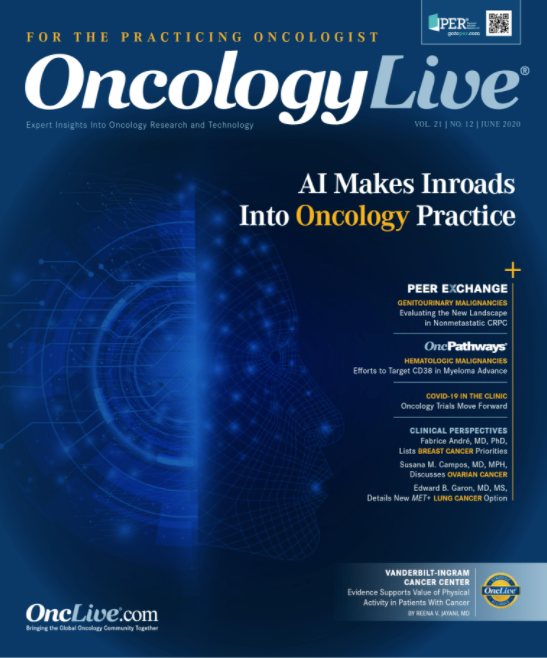Publication
Article
Oncology Live®
Profusion of New Drugs Prompts Need for Pragmatic Clinical Trials
Author(s):
The explosion of COVID-19 studies illustrates questions that have plagued oncology research.
Maurie Markman, MD

There are many lessons to be learned from the rapidly evolving coronavirus disease 2019 (COVID-19) pandemic. These include the need for objectively valid scientific expertise and knowledge in guiding public health policy to optimize the chances that individuals will remain safe while ensuring that our society effectively deals with the immediate consequences of the pandemic and develops essential plans for the future.
Two aspects of clinical research into COVID-19 are particularly striking and may offer lessons for the oncology field. First, the impressively large number of individuals who have quickly agreed to participate as research subjects in COVID-19 treatment and vaccine trials emphasizes the general willingness of members of our society to join in efforts to help develop scientifically rigorous knowledge that will critically inform efforts to cure or prevent this terrible infectious illness.1
This observation supports surveys conducted over the years regarding the considerable interest among patients with cancer in participating in clinical research studies that not only may improve their own condition but also generate information that will be beneficial for future generations of individuals with a malignancy. Such data are highly relevant for the potential acceleration of efforts to discover clinically meaningful advances in cancer management through the conduct of scientifically rigorous investigation.
However, another facet of COVID-19 research is not such a positive development. That is the potential that well-intentioned but unfortunately poorly focused and uncoordinated clinical research efforts will not be in the public’s best interest. As noted in a recent commentary in Science, there are more than 18 ongoing clinical trials that plan to enroll 75,000 patients in North America examining a variety of hydroxychloroquine regimens for the treatment of COVID-19.2
Is this number of trials and research subject requirements necessary or—far more importantly—helpful? How many of these studies are essentially identical in their scientific goals, patient populations, and study end points? How many of these studies are optimally designed such that they have the potential to reach a scientifically valid and clinically meaningful end point versus those that may yield misleading results by being underpowered or by having some other serious protocol design flaw?
The explosion of COVID-19 studies illustrates questions that have plagued oncology research. To be clear, these concerns are not meant to suggest that studies designed for initial or subsequent drug regulatory approvals in the oncology arena suffer from inadequate design or inappropriate conclusions. Rather, the focus here is on the impact of multiple clinical research efforts undertaken by individual pharmaceutical/biotech companies in the development of their products.
Unanswered Questions
Although such studies are an appropriate and understandable part of the regulatory process, when a new or established antineoplastic agent receives marketing approval as a single agent or in a combination regimen, oncologists are forced to quickly—and essentially on their own—examine the merits of the new offering within the context of existing or other recently approved products in the absence of clinically meaningful comparative data.
Consider, for example, the nearly simultaneous approval of 2 PARP inhibitor agents for the management of previously treated prostate cancer. The drugs differ in on-label requirements for prior therapy and, perhaps most relevant, in mandated biomarkers for selecting the patient population most likely to achieve clinical benefit. Of course, the reason for this state of affairs is the simple fact that the individual studies that resulted in regulatory approval for the drugs differed somewhat in their eligibility and ineligibility criteria as well as in other clinically relevant factors. So in the absence of comparative data for the 2 agents, the treating oncologist is left to decide which strategy is optimal for their patients.
Perhaps in no area of oncology is this confusing status quo of greater concern than in ovarian cancer. There are currently 3 PARP inhibitors approved as second-line or later maintenance therapy for patients with this malignancy who have achieved a complete or partial response to platinum-based chemotherapy.3,4 And, from a regulatory perspective in the United States, biomarker evidence of a BRCA mutation or other evidence of DNA repair deficiency is not required for use of these agents in the second-line or later setting. Additionally, the antiangiogenic agent bevacizumab (Avastin) is approved in essentially the same clinical setting in combination with a platinum drug and as single-agent maintenance therapy.3 Thus, practicing oncologists have at least 4 therapeutic approaches in this setting that they and their patients must consider in the absence of randomized comparative data to assist in this decision-making process.
Added to this mix of independent highly positive clinical trial data that may confuse rather than inform management decisions are the results from several first-line ovarian cancer studies that examined 2 different PARP inhibitors and in 1 case, the use of a PARP inhibitor combined with bevacizumab.5-7 Again, regulatory approval was appropriately based on the individual trial designs and strategies that included different approaches to patient selection, duration of maintenance drug administration, and biomarkers.
One solution to this clinical dilemma might be to directly compare the drugs and approaches that may be reasonably employed in ovarian cancer (eg, single-agent vs combination regimens, duration of therapy, specific molecular biomarker platforms, etc) in several pragmatic clinical trials specifically designed to address the question most relevant to the patient. That question is most likely to be: “Of the currently available agents and delivery strategies that might be considered in my situation, what is best for me?”
Considering the importance of this question, trial accruals likely would not be an issue, and multiple clinically meaningful questions could certainly be answerable over a relatively short period of time. Although there are many complex issues associated with such a suggestion—including the essential issue of study funding—perhaps it is finally time to give this concept a try.
References
1. Underused coronavirus tests, controversial vaccine study and Arctic emergency. Nature. 2020;580(7805):569. doi:10.1038/d41586-020-01220-z
2. London AJ, Kimmelman J. Against pandemic research exceptionalism. Science. 2020;368(6490):476-477. doi:10.1126/science.abc1731
3. Markman M. Pharmaceutical management of ovarian cancer: current status. Drugs. 2019;79(11):1231-1239. doi:10.1007/s40265-019-01158-1
4. Markman M. Poly (ADP-ribose) polymerase inhibitors in the management of ovarian cancer. Women’s Health (Lond). 2018;14:1745505717750694. doi:10.1177/1745505717750694
5. Moore K, Colombo N, Scambia G, et al. Maintenance olaparib in patients with newly diagnosed advanced ovarian cancer. N Engl J Med. 2018;379(26):2495-2505. doi:10.1056/NEJMoa1810858
6. Gonzalez-Martin A, Pothuri B, Vergote I, et al; PRIMA/ENGOT-OV26/GOG-3012 Investigators. Niraparib in patients with newly diagnosed advanced ovarian cancer. N Engl J Med. 2019; 381(25):2391-2402. doi:10.1056/NEJMoa1910962
7. Ray-Coquard I, Pautier P, Pignata S, et al; PAOLA-1 Investigators. Olaparib plus bevacizumab as first-line maintenance in ovarian cancer. N Engl J Med. 2019;381(25):2416-2428. doi:10.1056/NEJMoa1911361










